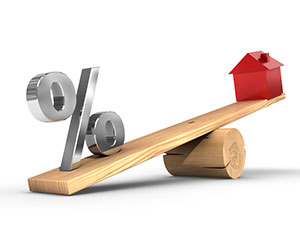Low Interest Rates Could Make Australian Economy Unstable
October 8th, 2014
Low interest rates lead to higher house prices as a result of more lending and more borrowing, says Jacob Greber, an economics correspondent with The Australian Financial Review. This could spell disaster for the Australian economy when interest rates rise due to pressure on inflation.
Three of the four big banks in Australia currently offer low fixed interest rates for their home loan products to get more mortgage customers, which led the chief bank regulator, Wayne Byres, to warn that he’ll be watching the banks closely to see if they’re overloading on risk. But bank executives claim that they won’t allow lending to get out of control or create a risky portfolio.
However, Australia’s top Treasury and regulatory chiefs are worried that low interest rates might undermine the financial sector, as people predict that homeowners will find it difficult to pay off their mortgage if rates increase.
Low interest rates are good news for homebuyers, but this means pushing up house prices that younger people cannot afford and overheating the housing market. This may eventually lead to the Reserve Bank of Australia (RBA) raising interest rates sooner than expected to reduce lending and borrowing, and avoid a housing bust. People will then have to make increased mortgage payments, which could damage the economy.
Moody’s and Credit Suisse also support the predictions that the housing market may not be resilient enough to deal with interest rate increases. With low interest rates, more people are borrowing larger mortgages even though income growth has slowed down, which means that people are spending 21% of their income on interest and principal repayments. If the RBA pushes up the cash rate to 3.5%, people will then have to spend 23% of their income, which is unsustainable.
Credit Suisse analysts Damien Boey and Hasan Tevfik have said that this would match the pain threshold reached by households in 2008, when the cash rate was 7.25% and complaints about ‘mortgage stress’ dominated headlines. Due to larger mortgages, many households can no longer afford higher interest payments, so there’s pressure on the RBA to keep interest rates low for longer, they add.
Moody’s Analytics mentioned in another report that there were ‘worrying trends’ across Australia’s property markets once interest rates rise. Houses in both New South Wales and Victoria would be overvalued when the RBA raises the cash rate to 4.5%. The report also estimated that the tax incentive on investment properties (negative gearing) has added 9% or $44,000 to house prices. These findings highlight the growing unease amongst global policymakers regarding the potential risks of low interest rates.
Martin Parkinson, Treasury secretary, also pointed out that low mortgage rates (which are less than 5% due to the global monetary policy stimulus) raise the risk of repeating the 2008 global financial crisis. There are parallels between now and what he described as the ‘Great Moderation’ of the pre-2008 crisis era, which has made investors and policymakers think that volatility would stay low, prompting them to search for yield or leverage. This pattern can be seen in periods preceding other financial crises and the risk characteristics are evident now, he said.
While the global central banks’ actions have prevented a worse crisis, they created new risks in the process. For example, there’s a higher appetite for risk as more people are investing in the property market (pushing up house prices), and the financial markets don’t want to miss out on gains (stoking fears of new asset bubbles). This yield-seeking behaviour is increasing the potential costs associated with easy monetary policy, including the “impact on company default rates and economic growth if monetary stimulus is withdrawn too soon”, Parkinson said.
Overall, monetary policy efforts since the 2008 crisis has left Australia and the world far less equipped to respond to future crisis, says Parkinson. Therefore, he argues that “we need to take the pressure off monetary policy” and that it should “be supportive of the real economy”. In other words, the global economy should return to sustained growth by boosting economic growth by 2%.





